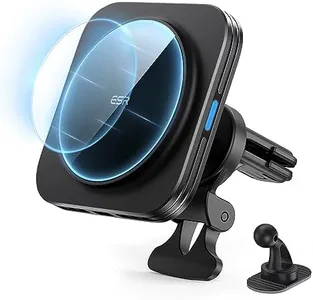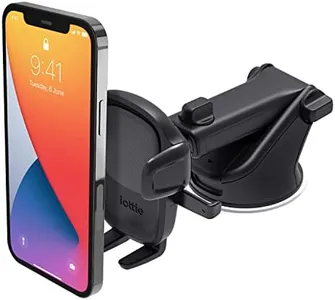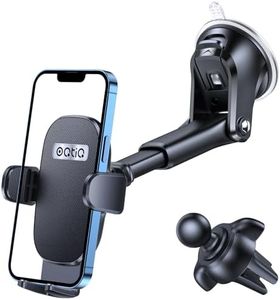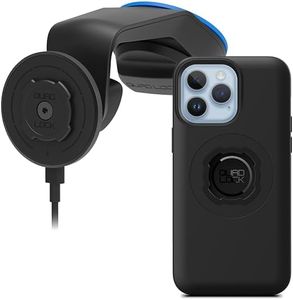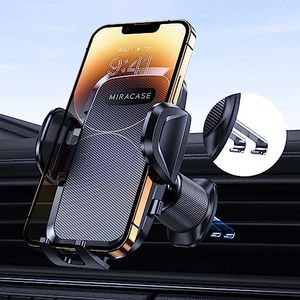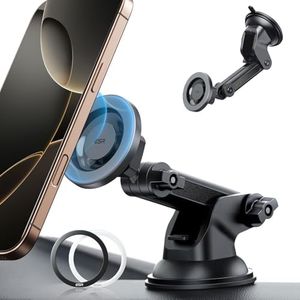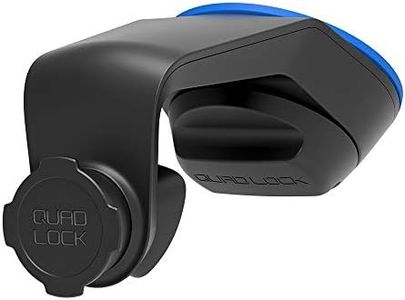We Use CookiesWe use cookies to enhance the security, performance,
functionality and for analytical and promotional activities. By continuing to browse this site you
are agreeing to our privacy policy
10 Best Phone Car Mounts
From leading brands and best sellers available on the web.Buying Guide for the Best Phone Car Mounts
Selecting the right phone car mount is all about ensuring safe, convenient access to your phone while driving. Whether you need your phone for navigation, music, or hands-free calls, the correct mount will keep your device secure, visible, and easy to reach without distracting you from the road. To choose wisely, you should pay attention to how mounts attach to your car, how securely they hold different phone sizes, how easily you can move or remove your phone, and if they offer extra features that fit your habits.Mounting LocationThis spec describes where in your car the mount is designed to be attached—common spots include the dashboard, air vent, windshield, or CD slot. Mounting location affects your line of sight, ease of access, and overall safety. Dashboard and windshield mounts usually give good visibility for GPS, but may block your view if placed poorly. Vent mounts are compact and keep your phone closer but could obstruct airflow or not work well with some vent types. CD slot mounts use the CD player slot, which is only relevant if your car has one. To choose, consider where you want your phone to be in your natural line of sight without becoming a distraction, as well as your car’s interior design.
Attachment MechanismThis feature refers to how the mount itself sticks to your car and how it holds your phone. For car attachment, some mounts use suction cups, adhesives, or clips. Suction cups provide flexibility and are reusable, but can lose grip over time or in temperature extremes. Adhesive types are more permanent but can be hard to remove cleanly. Clips (like in vent or CD slot mounts) are easy to move, but stability depends on your car’s structure. For phone attachment, mounts may use cradles, magnetic pads, or clamps. Magnetic mounts are great for quick one-handed use, but require your phone or case to have a metal plate. Cradle or clamp mounts give a very secure grip and work with most phone sizes, but take more effort to put the phone in and take it out. Think about how frequently you’ll be docking and undocking your phone and how secure you need it to be.
AdjustabilityAdjustability covers how well you can move or rotate the mount to position your phone. Features may include tilting, rotating (for landscape or portrait viewing), and extension arms. If you use your phone for navigation, you'll want a mount that can adjust angles for optimal viewing with minimal reflection or glare. If you prefer voice commands or rarely touch your phone, basic adjustability might be enough. Choose based on your primary uses and preferred sitting position—more adjustability is convenient but can sometimes mean bulkier mounts.
Phone Size CompatibilityNot all mounts fit every phone. Some are designed for a specific size range, while others are universal. This spec tells you the minimum and maximum width or thickness of phones or cases the mount can hold. If you frequently change phones or use thick cases, opt for a universal or adjustable design. Double-check that your specific phone (with or without case) fits comfortably and securely.
Charging FeaturesSome mounts offer built-in charging, such as wireless charging pads or integrated cable management. This is important if you use your phone for long periods, like for navigation, which can drain your battery quickly. Wireless charging mounts are convenient but require your phone to support wireless charging and may add bulk. Others just provide a tidy way to route your own charging cable. If charging while mounted is important to your routine, prioritize these features.
Stability and Vibration HandlingYour mount should keep your phone steady, even on bumpy roads. This spec is about how well the mount absorbs shocks and prevents your phone from shaking or falling. Generally, mounts with rubberized grips or shock-absorbing designs perform best. If you drive on rough roads or have a heavier phone, choosing a mount known for stability will help you avoid distractions and protect your device.
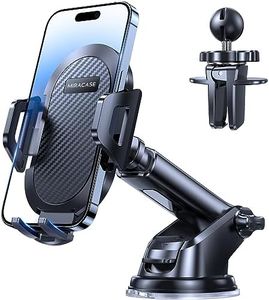
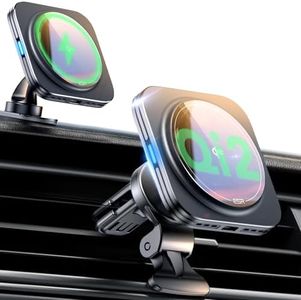
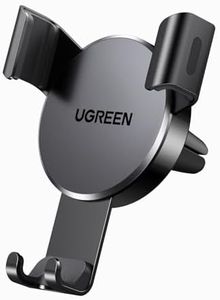

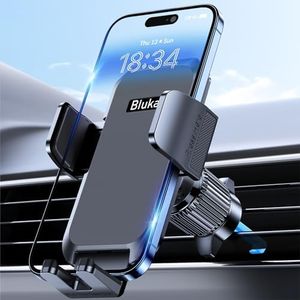

![Blukar Car Phone Holder, Adjustable Car Phone Mount 360° Rotation for Car Dashboard/Windscreen [Upgraded Strong Suction] - One Button Release Car Phone Cradle for 4.0''-7.0'' Phones](https://images-proxy.bestreviews.guide/CTp0_CORrLl-D2pH_0Kt_M88c5s=/0x300/https://m.media-amazon.com/images/I/41DUz0HHvAL._AC_CX679_.jpg)
![LISEN Suction Phone Holder for Ute, [Always Locked On] Electric Suction Cup Phone Mount Dashboard Windshield Car Phone Holder, Adjustable Phone Holder for iPhone 16 15 14 Samsung Android Big Phones](https://images-proxy.bestreviews.guide/EuxQi9knJDftvbCZhtSz36LkaGQ=/0x300/https://m.media-amazon.com/images/I/51j0LOBZ45L._AC_CX679_.jpg)
